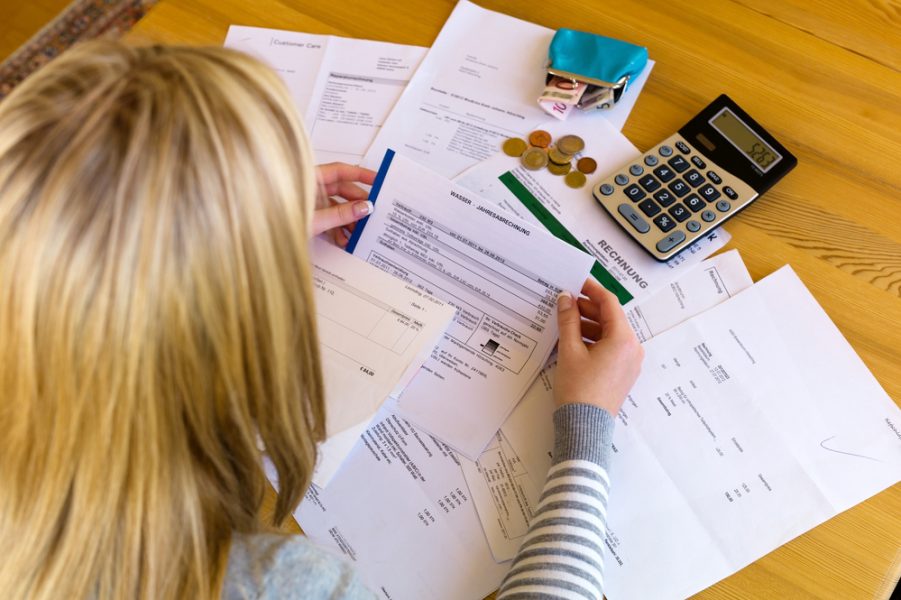Millions of student loan borrowers dream of the day they can finally pay their loans off in full. But with the rising cost of living and stagnant wages, many have simply accepted they won’t ever be able to pay off their student debt.
I was there too.
I graduated from Arizona State University in August 2015 with nearly $73,000 in student loan debt. With interest, it eventually ballooned to just under $80,000. But after immense persistence, I paid off my student loans in full this past October.
Here’s how I did it, step-by-step, along with the principles I used throughout my paydown journey.
Student loan refinancing, on steroids
I wasn’t able to take advantage of federal student loan lending, because my parents “made too much”. So I was forced to originate my student loans with Wells Fargo.
At the beginning of my paydown journey, interest was crushing me. I knew there had to be a better way. That’s when I came across student loan refinancing.
I moved my loans from Wells Fargo to SoFi, which reduced my interest rate from ~8% to ~6%. From there, I refinanced my loans six different times, ending with a personal line of credit through First Republic (if you’re interested in a LOC, email Arpi and tell her Brett sent ya! Adagesyan at firstrepublic.com) at a sweet 2.25%.
Here’s the timeline of how I strategically knocked down my interest rate and debt, simultaneously:
Student loan refinancing is simple:
- Find a lender with a lower interest rate/better repayment terms
- Apply for the refinancing loan
- If you’re approved, the new lender will pay your old lender off
It’s much easier than a home refinance since there is no asset attached to the loan. Each time I refinanced, the process took a few days and I never paid any fees.
This is definitely an extreme example, but it was vital to my paydown journey. I estimate that if I would have kept my loans with Wells Fargo, I would have paid $10,000-$20,000 more in interest.
More money, less problems
Many student loan paydown stories are filled with examples of extreme budgeting like living on rice and beans or working insane hours. But here’s a nugget worth remembering: you can only cut back so much, but you can earn as much as you want.
So I increased my income in two ways: job hopping and freelancing.
Job hopping
I’m now on my 11th job in seven years after college. It’s an extreme, but I’ve been able to quadruple my income since graduating.
There’s only two ways to get a raise: Move up or move out. Employers aren’t giving raises like they have in the past, and job hopping is not as risky as it once was.
And in this time of inflation, you must be your own advocate to get the raise you deserve. So if you haven’t moved jobs in the last few years, it may be time to put your resume out there.
Freelance writing
I’ve always known I had a knack for writing, but I had no clue where to get started. I started writing for my mentor for free. From there, I was able to build my portfolio and start charging for my services.
When I got my very first paycheck for a whole $137.50, I had an adrenaline rush. I knew that I was onto something…
I was able to build this into a lucrative side hustle where I was able to make sometimes up to $4,000 per month, on top of my 9-5 job. Some months, I would make very little. But I was able to make my own hours and do something I truly enjoyed.
But this took immense sacrifice. I would come home from my 9-5, and write for hours. I drank more coffee than I should have, but it worked. Since 2018, I’ve made roughly $30,000 in freelance gigs.
In this gig economy, there is ample money to be made. And it can make a significant difference in your student debt paydown, as well as your quality of life. But more importantly, do something you enjoy. And don’t spend the extra money you earn.
Life doesn’t stop because of debt
My student debt was top of mind constantly, and it was exhausting. But once I gained that control back through reducing my interest rate and increasing my income, the debt was no longer my priority. Investing for the future and living my life was.
So while I was continuing to pay my debt balance down, I still:
- Bought a home
- Traveled to 20+ countries, both lavishly and budget-centric
- Enjoyed expensive dinners and experiences
- Buried money into my retirement accounts
- …and most importantly, prioritized my happiness
Your priority right now shouldn’t be paying off your student loans, it should be getting control of them. Once you have control, you can do the things you want in life.
How to pay off your student loans
I could have easily saved every penny to pay off my student loans. I probably would have had them paid off a few years faster. But frankly, investing that money into the stock market and enjoying my life has been a much better strategy.
However, I never lost sight of paying off my student loans. I remember being a 22 year old wrought with anxiety about my student loans, and promised to myself I would pay them off before I turned 30.
I paid them off a few weeks before my 29th birthday.
So if you’re in significant student debt, here’s five steps to pay your debt off without sacrificing your well being or happiness:
- Set a goal: Make a realistic goal for yourself to pay off your loans.
- Cut back: Don’t sacrifice the things that make you happy. But if you’re spending frivolously, cut that spending back.
- Refinance: Look to see if you can get better repayment terms.
- Income: Ask for a raise. Start side hustling. Get a roommate. Anything you can do to create an income stream will make a huge difference.
- Post-debt plan: Visualizing your life after student debt is equally important as paying it off. What do you want to do after your debt is gone?
Brett Holzhauer turned his love for personal finance into a full-time career. After graduating from the Walter Cronkite School of Journalism and Mass Communications, he began blogging about his own financial endeavors. This led him to eventually write for LendingTree, Forbes Advisor and most recently CNBC.
He now is a Senior Writer for Nirvana Money, and recently earned his CPFC certification.
When he isn’t writing about personal finance, he is enjoying the beach or watching college football.






